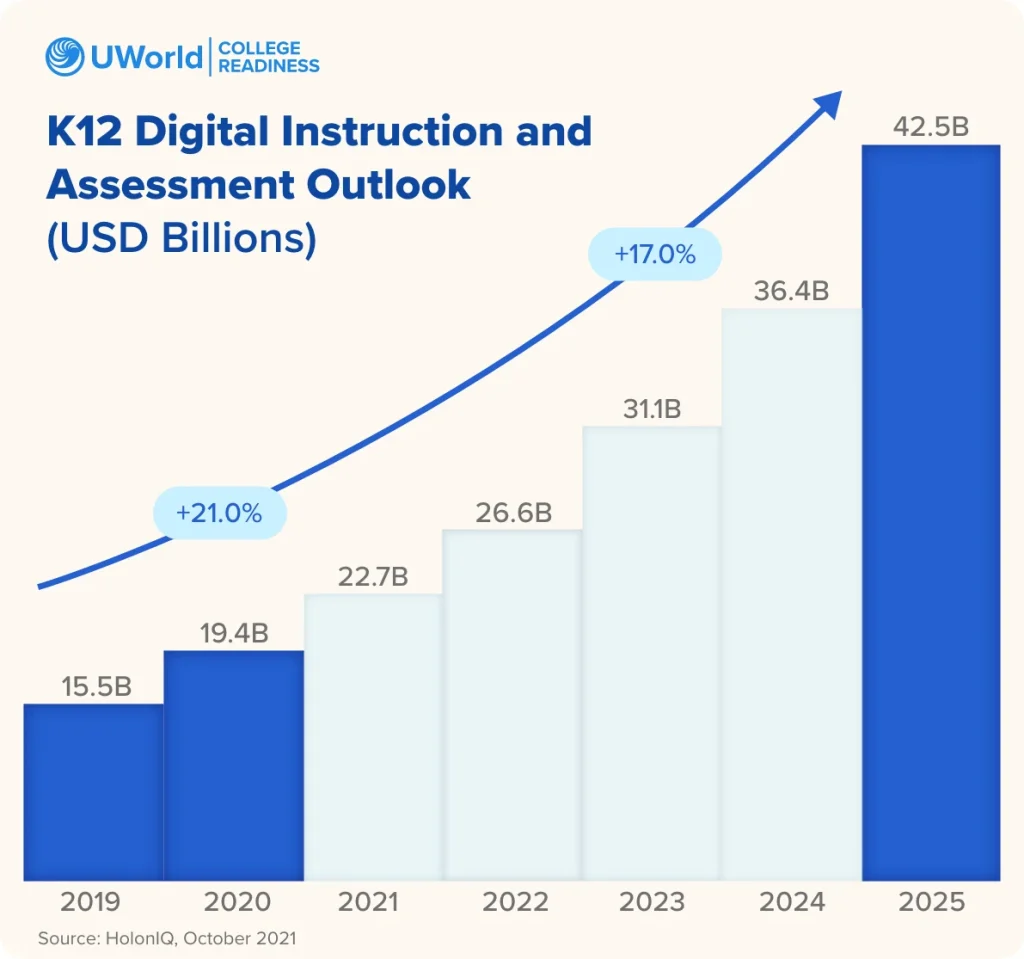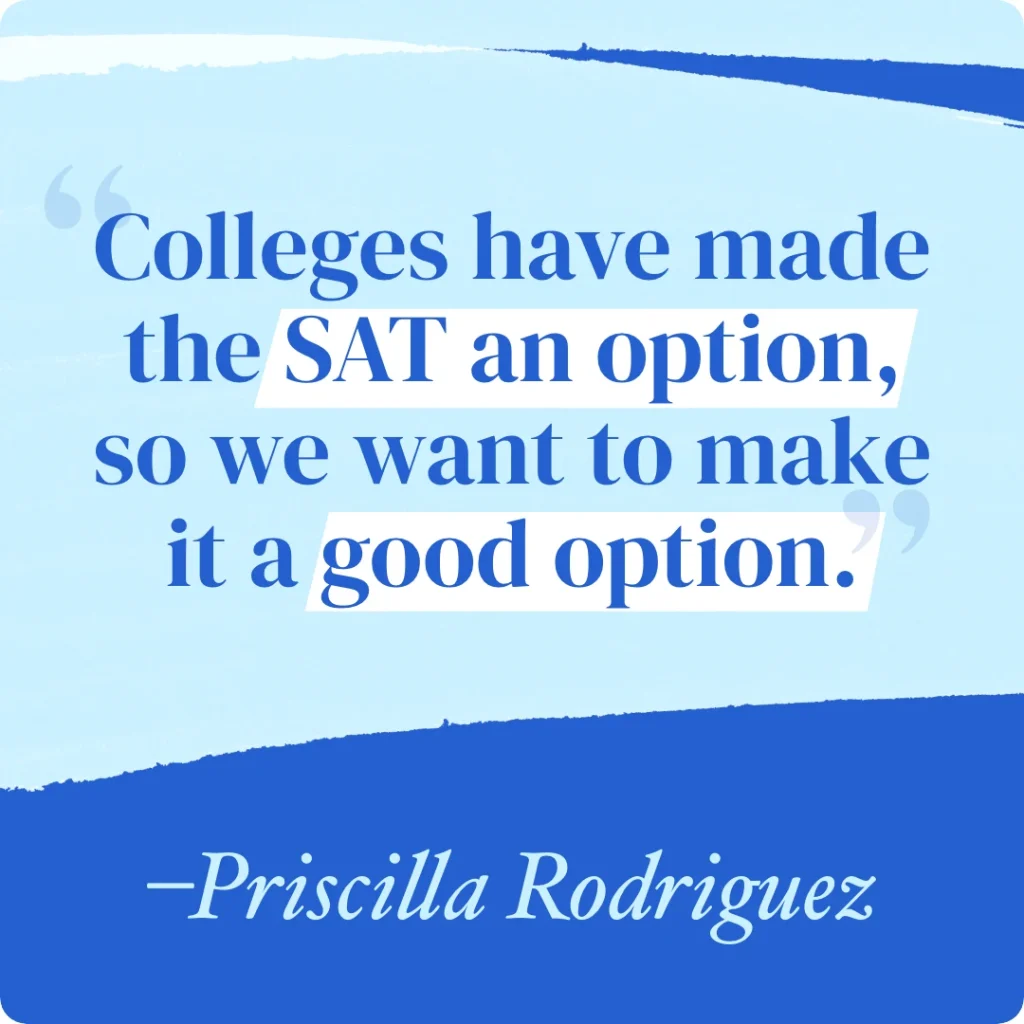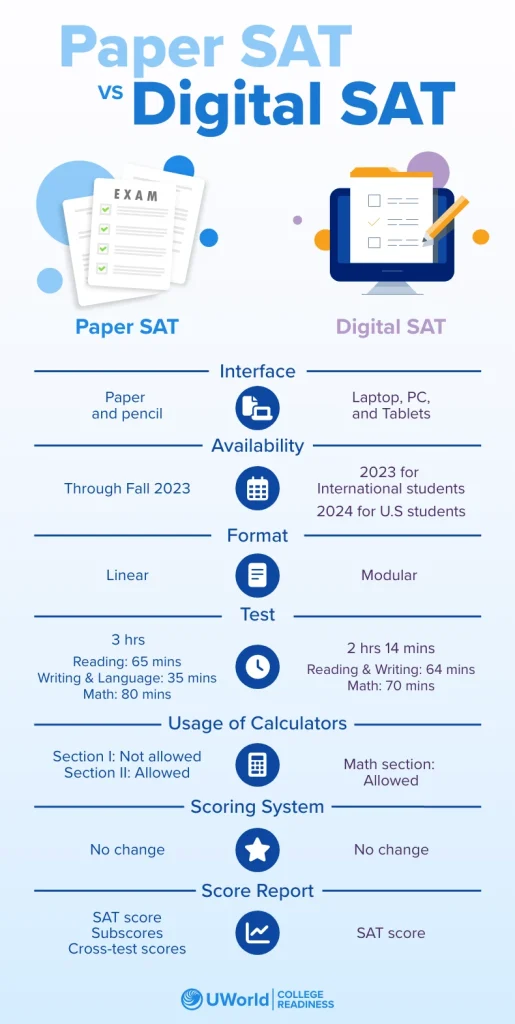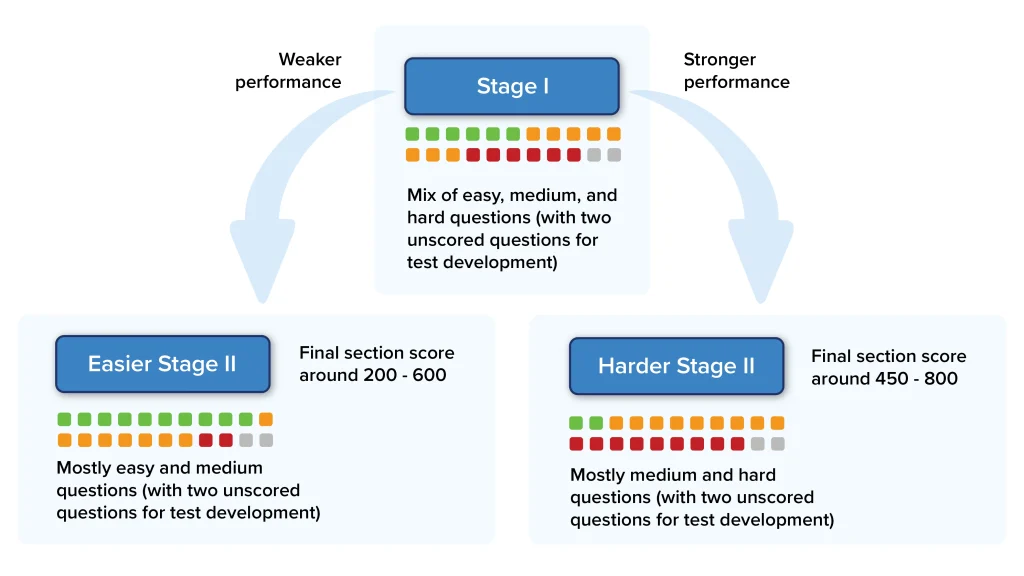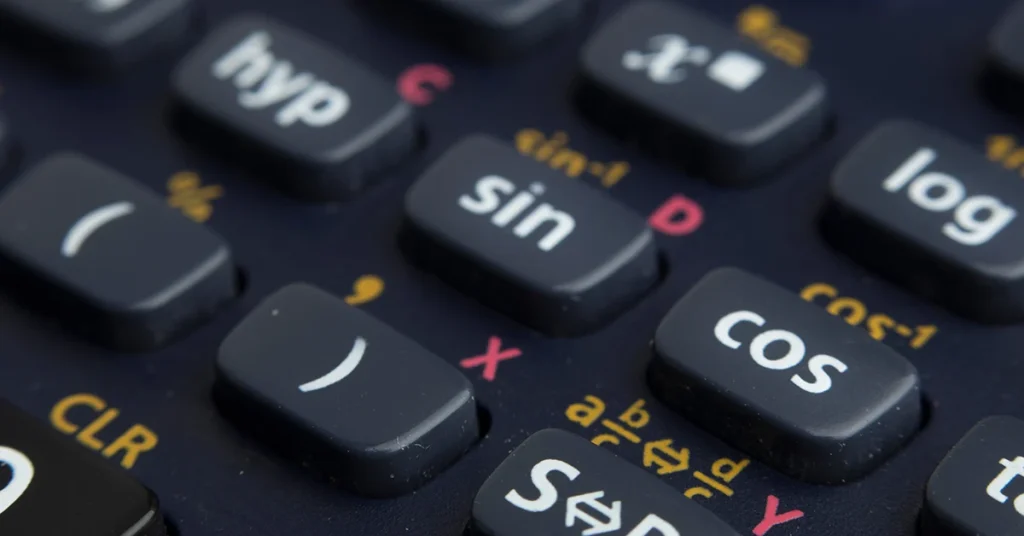Guiding Students to Success on the New Digital SAT® Test
The SAT® has been a common part of college admissions for years, but the general public and the College Board® agree—it's time for a change. The new digital SAT test, or DSAT, is an innovative approach to the traditional exam, allowing students to take it on a computer. It aims to make the test-taking process easier, faster, and more secure while keeping the same level of fairness and difficulty as the paper-based version. Digital testing also aligns with the direction education is going as a whole, making it a natural “next step” for the SAT.
What Exactly Is The Digital SAT?
As the name suggests, this new digital SAT test format will be delivered on computers and tablets, rather than with paper and pencil, and will include features such as faster score reports and a more personalized test-taking experience. Like the paper version of the exam, the DSAT will be scored on a 400-1600 scale. Although the content on the new SAT test is similar to the content on the paper assessment, it is not identical.6 Therefore, by staying informed about the new test format, educators can help their students get ready for the DSAT.
According to a recent survey conducted by HolonIQ’s Global K12 Education Network1, the K-12 digital instruction and assessment market will reach a value of over $42 billion by 2025. The future of K-12 assessment is, quite simply, online.
*Data from HolonIQ’s Global K12 Education Network1
Like K-12 schools, higher-learning institutions are also trending toward online learning. Even before the digital boom of the COVID-19 pandemic, the percentage of undergraduates taking at least one online course had risen from 15.6% in 2004 to over 43% in 20162. This trend suggests that to accurately assess a student’s college-readiness, that assessment should be done online. The new digital SAT has been designed with this in-mind, better assessing each student’s preparedness for college-level work and adapting to their individual abilities.
Why is the SAT going digital?
One of the reasons the SAT is going digital is to adapt to the changing needs and preferences of today's students. And student preferences do matter—currently, at least 1,835 U.S. colleges are test-optional, test-blind, or score-free3. This means they do not require standardized test scores from students to gain admission to their schools, so taking these tests is completely a student’s prerogative. To keep the SAT relevant and beneficial for prospective college students, it must meet their needs and preferences. Pricilla Rodriguez, the College Board's VP of College Readiness Assessments, echoed this trend as yet another justification for the DSAT: "Colleges have made the SAT an option, so we want to make it a good option." 4
The test’s new digital format will not only make it more accessible to a wider range of students, but it will also provide a way to connect them to scholarships, work programs, and college opportunities. For a student who wants to remain open to as many opportunities as possible, deciding to take the digital SAT test is a simple choice. Additionally, SAT digital testing will result in much faster scoring, allowing students to view their outcomes sooner and make well-informed decisions about college applications.
The Digital SAT timeline
The new SAT test will be rolled out in two phases: one for international students and another for students in the United States. To get a better sense of the timeline for the new digital SAT, take a look at the following table:
| Cycle | International SAT | U.S. SAT |
|---|---|---|
| Spring 2023 | Digital | Paper and Pencil |
|
March 11, 2023 May 6, 2023 June 3, 2023 |
||
| Fall 2023 | Digital | Paper and Pencil |
| Spring 2024 | Digital | Digital |
The international version of the digital SAT test has already been released as of March 2023, while students in the U.S. will still take the traditional paper and pencil test through 2023. By spring 2024, both versions of the test will be administered in digital format.
How Is the Digital SAT Different?
While the new SAT test will maintain the same level of rigor as its paper predecessor, there are a few differences that teachers should be aware of when preparing their students for the exam.
The test-taking time will be shorter
The new digital SAT will have a shorter testing time compared to the current paper version. This is a result of removing some sections and questions from the test and using technology to speed up the testing process. The DSAT will consist of two main sections—Reading and Writing, and Math—and will be completed in approximately two hours. This is significantly shorter than the paper version, which takes about three hours and 15 minutes to complete.
The DSAT has been designed with a shorter test time in mind, in order to minimize student anxiety and make the testing experience more manageable. Studies have shown that shorter test times can help reduce test anxiety and increase student performance.5 Moreover, the digital format of the DSAT enables a more efficient testing process, with features such as on-screen calculators and digital notes, which can save time and make the test-taking experience more convenient for students.
The test will be adaptive
The new digital version of the SAT is designed to provide a more personalized testing experience for students, with one of the key features being adaptive testing. This means that the difficulty level of the second part of the test will be adjusted based on how well the student performs on the initial questions. Specifically, the second part of the test will include harder questions if the student performs well on the first part, and easier questions if the student performs poorly on the first part. This is different from the traditional paper version of the SAT, which presents all students with the same set of questions.
Adaptive testing allows the digital SAT to provide a more accurate assessment of a student's abilities by challenging them at an appropriate level. Students who perform well on the initial questions will be presented with more challenging questions, which can help to better differentiate their abilities and provide a more accurate measure of their strengths and weaknesses. On the other hand, students who struggle with the initial questions will be presented with easier questions, which can help to build their confidence and provide a more accurate measure of their abilities.
There are significant changes to the reading and writing section
The exam’s new digital format has combined the reading and writing sections, which has reduced the number of verbal questions to 54. Each question in the Reading and Writing section will be paired with a very brief text. This change will allow students to focus more on answering the questions accurately and efficiently. According to the College Board's Assessment Framework for the Digital SAT Suite,6 the reason for this change is to provide a more streamlined testing experience and evaluate students' ability to read and comprehend a variety of texts—a poem, a section of notes, a passage excerpt, etc.—effectively.
Additionally, these shorter reading stimuli will be paired with a wider variety of question types, which will require students to read the texts more critically. It is also important to note that the new digital format will not change the actual content of the exam, as students will still be tested on their reading comprehension, vocabulary, and grammar skills.
Calculators will be allowed for the entire math section
One of the biggest changes on the DSAT is that students will be allowed to use calculators for every math question. This differs from the previous paper version, where students could only use calculators for specific math problems. As a result of this modification, test takers will have access to a calculator for the duration of the entire math portion, which could help to improve accuracy and lower test-taking errors.
The digital SAT will not only permit a calculator but will also include one that’s built into the exam itself. The majority of students will already be familiar with the Desmos-created embedded graphing calculator. It will be available to students throughout the math section, and it is designed to be user-friendly and easy to use. Students won't have to switch between screens or use a different device because the embedded calculator will be on the same screen as the math problems. In addition to more complicated features like square roots and exponents, the calculator will include fundamental operations like addition, subtraction, multiplication, and division.
Teachers may need to modify their practice materials and instruction to incorporate the use of calculators and support students in developing their calculator skills as a result of this change. It's important to keep in mind, though, that while using a calculator is permitted for all questions in the DSAT's math section, it might not always be necessary or the best course of action. A lot of time can be lost by trying to use the calculator excessively. Of course, students are also free to use scratch paper if they prefer.
Scores will be released faster
One significant advantage of the new digital SAT is that scores will be released more quickly than they are for the current paper version. Students will be able to access their digital SAT scores within two weeks of taking the test, whereas it can take several weeks for paper scores to become available. This faster turnaround time can help students stay on track with their college admissions timeline and make more informed decisions about their standardized test scores.
The streamlined delivery of digital test results is what makes digital SAT score reporting so much faster. With the digital format, test scores are delivered electronically and can be processed more quickly than paper scores, which must be physically mailed and processed.
Faster score reporting can be helpful for educators and schools in addition to students. As a result, schools will have more time to plan and make decisions about admissions and scholarships. Educators can track student data more effectively and modify their instruction using quicker score reporting.
Reports will have more information
The digital SAT provides more information about student performance than the current paper version. In addition to the two section scores (Reading and Writing, and Math), the digital SAT also provides additional college readiness information for students. This information can help students connect with scholarships, work-study opportunities, and two-year college programs.
The digital SAT report also includes a personalized study plan for each student. This plan is based on the student's individual performance and is designed to help them improve their skills and prepare for college coursework. The study plan can be accessed through the student's College Board account and can be used in conjunction with other preparation resources, like UWorld’s Online Preparation for the Digital SAT Exam, to help students prepare for future testing and coursework.
A student's readiness for college coursework can be better understood by educators and college admissions officers because of the additional data the digital SAT provides. More specific information on student performance can help teachers modify their instruction to better meet the needs of their students. College admissions officers can use the information to make more informed decisions about potential students and help connect them with appropriate resources and programs.
How to Prepare Students for the New Digital SAT
Preparing students for the digital SAT is a unique task that requires a different approach compared to other tests. To help their students feel confident and succeed on test day, educators can use a variety of strategies tailored specifically to the digital SAT. Here are some effective ways to prepare students for the DSAT:
- Familiarize students with the DSAT's digital format
- Emphasize digital literacy
- Encourage time management skills
- Practice using context clues
- Practice using a calculator
- Use resources like UWorld to prepare for the digital SAT
Familiarize students with the DSAT's digital format
Of course, teachers will need to familiarize their students with the test’s new digital format. Since students will take the DSAT on a computer, they will need to become comfortable answering test questions online.
To help teachers prepare their students accordingly, UWorld offers digital SAT preparation. UWorld's Online Preparation for the Digital SAT Exam can help educators teach their students how to use the computer-based testing platform and become familiar with the new format of the exam. This program provides realistic digital practice tests that mimic the DSAT's new digital format.
In addition to the practice tests, UWorld's digital SAT preparation program also provides detailed explanations for every question on practice tests. This feature can help teachers support each student’s ability to analyze and solve questions that they might find challenging. By providing in-depth explanations of each question, students can learn the concepts tested on the digital SAT and be better equipped to answer similar questions on the actual test. Additionally, UWorld offers personalized performance analytics that teachers can use to identify their students' strengths and weaknesses. With this information, teachers can tailor their teaching to the specific needs of their students and help them achieve better results on the digital SAT exam.
Emphasize digital literacy
Preparing students for the new digital SAT requires a focus on developing digital literacy skills. Students must become comfortable using online tools, such as virtual calculators and highlighters, as well as navigating the digital test's interface. Providing students with access to virtual calculators and annotation tools can help them become more comfortable with them, making them easier to use during the exam.
As noted, it's also important to help students become familiar with the digital test interface. Students should understand how to navigate the test, including how to move between questions, flag questions for review, and access the calculator and other tools. This will help them feel more confident and prepared when taking the digital SAT.
UWorld provides students with practice tests that mimic the digital SAT's format, allowing them to get familiar with the digital test's interface and online tools. Additionally, the program provides students with personalized feedback and analysis, helping them identify areas for improvement and focus their study efforts. With UWorld's online preparation, students can build the digital literacy skills they need to succeed on the DSAT.
Encourage time management skills
Preparing for the new digital SAT requires more than just knowing the content. Students must also develop strong time management skills to ensure they can complete the exam on time. Teachers can help their students develop these skills by teaching pacing strategies and encouraging them to prioritize questions. Pacing strategies may involve dividing the test into smaller sections and setting a target time for each of them. Teachers can also encourage students to prioritize questions by focusing on those they are most confident in answering first. This can prevent them from getting stuck on any particular question.
UWorld's Online Preparation for the Digital SAT Exam can be a valuable resource for teachers trying to help their students develop time management skills. The program includes timed practice tests that simulate the digital SAT's format and timing. By using these practice tests, students can develop a better sense of how much time they should spend on each question and refine their pacing strategies.
Practice using context clues
To further prepare their students for the digital SAT, teachers will need to help them develop strong context clue skills. This is especially important since context clues make up a large percentage of the official digital SAT practice questions that have been released to the public. This means students are more likely to be tested on them on the actual exam.
By giving students practice questions that require them to use context clues to answer questions, teachers can give their students the practice they need. UWorld's Online Preparation for the Digital SAT Exam can be a valuable tool for this. The program includes a plethora of context clues-focused practice questions.
Practice using a calculator
As noted before, teachers should help their students develop strong calculator skills in preparation for the DSAT. Students must become familiar with calculator functions and features, as they will need to use them with the provided calculator that is embedded into the exam. However, it's important to note that students should not become overly reliant on the calculator, as using it too much can waste a lot of time. Teachers can help their students develop strong calculator skills by providing them with opportunities to practice using a virtual calculator.
UWorld's Online Preparation for the Digital SAT Exam can be a valuable resource for teachers looking to help their students develop strong calculator skills. The program includes a virtual calculator that simulates the one on the digital SAT, allowing students to become familiar with its functions and features. The program also includes practice questions that require students to use the calculator to solve math problems.
Use resources like UWorld to prepare for the digital SAT
UWorld's online preparation for the SAT exam includes digital practice tests and questions, helping students become familiar with the digital format. Additionally, UWorld provides detailed explanations for each question, allowing students to identify areas where they may need more support. By using these resources, students can be better prepared for the Digital SAT and feel more confident on test day.
How UWorld Can Help Students Prepare for the DSAT
UWorld's Online Preparation for the Digital SAT Exam is an excellent tool educators can use to get their students ready for test day. Not only does it provide students with practice tests that mimic the format and timing of the digital SAT, but the program also provides them with personalized feedback and analysis.
UWorld's online preparation also focuses on digital literacy skills. Its embedded virtual calculator, annotation tools, and other digital tools mimic exactly what students will see on the digital SAT. By using them in a practice setting, students can become more comfortable with these digital tools, increasing their confidence on test day.
Finally, UWorld offers educators a comprehensive content review for their students, allowing them to refresh their knowledge and fill in any gaps in their understanding. The program covers all of the subjects and topics tested on the digital SAT, ensuring that students are well-prepared for the exam.
A Case Study on Ukraine Global Scholars
Since its inception in 2015, Ukraine Global Scholars has been on a mission to help talented, high-need students gain admission into the world’s top colleges and universities, most of which are found in the United States. With UWorld’s help, international students are seeing increased test scores and improved acceptance rates.
Key Takeaways
As education continues to trend towards online assessment, a new digital format is a natural next step for the SAT exam. The DSAT will offer students a more accessible and personalized test-taking experience while also providing quicker–and more detailed–performance reports for educators. Teachers can use a variety of strategies, resources, and assessment techniques to help prepare their students for the DSAT's unique format, ensuring that they have the digital literacy skills and confidence they need to succeed on test day.
Learn more about how we strive to support educators who want to prepare their students for the digital SAT with our online preparation for the SAT exam.
References
- K12 Digital Transformation - 2023 survey. towards a hybrid future for K12 Learning and teaching. HolonIQ. Global Impact Intelligence. (n.d.). Retrieved April 18, 2023, from
https://www.holoniq.com/notes/2023-k12-digital-transformation - Snyder, T., Brey, C., & Dillow, S. (2018). Digest of Education Statistics 2018.
https://nces.ed.gov/pubs2020/2020009.pdf - Nietzel, M. T. (2022, November 16). More than 80% of four-year colleges won't require standardized tests for fall 2023 admissions. Forbes. Retrieved April 18, 2023, from
https://www.forbes.com/sites/michaeltnietzel/2022/11/15/more-than-80-of-four-year-colleges-wont-require-standardized--tests-for-fall-2023-admissions/?sh=15e0c5647fb9 - YouTube. (2022). YouTube. Retrieved April 18, 2023, from
https://www.youtube.com/watch?v=rPFseETCcKo. - Yusefzadeh, H., Amirzadeh Iranagh, J., & Nabilou, B. (2019, May 3). The effect of study preparation on test anxiety and performance: A quasi-experimental study. Advances in medical education and practice.
https://www.ncbi.nlm.nih.gov/pmc/articles/PMC6524999/ - The Digital SAT® Suite of Assessments Specifications Overview. (n.d.). Retrieved April 25, 2023, from
https://satsuite.collegeboard.org/media/pdf/digital-sat-test-spec-overview.pdf
